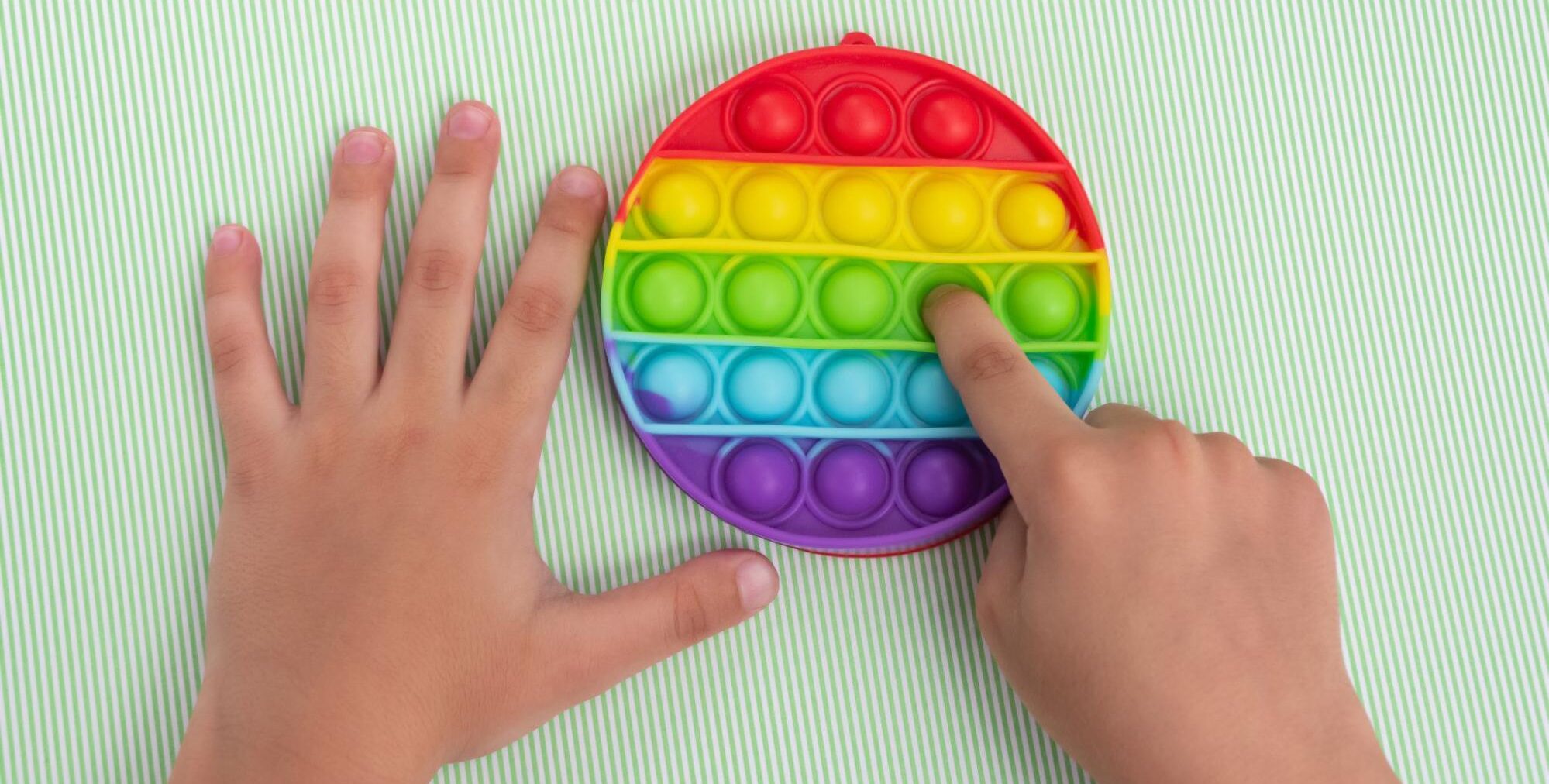
Fine Motor Skills: Activities and Importance for Child Development
By: Dr. Abe Kopolovich, DPT, MBA, JD-IP

Fine motor skills are essential for every task a child makes, from play to handwriting, managing clothing fasteners, and coloring. However, many children struggle with fine motor skills, including pincer grasp development and hand strength. In this article, we will explore the importance of fine motor skills and provide ideas for improving them through fun and engaging activities.
What Are Fine Motor Skills?
Gross Motor Skills are the large muscle movements that allow us to balance, coordinate, and move our bodies in space. They are essential for activities such as walking, running, and jumping while Fine Motor Skills are the small muscle movements that allow us to use our hands and fingers in precise and coordinated ways. They are essential for a variety of everyday activities, such as writing, drawing, and using tools.
Learning these skills is a crucial part of child development. Children develop fine motor skills and gross motor skills at different rates, but it is important to provide them with opportunities to practice these skills regularly.
Bilateral Hand Coordination

Bilateral hand coordination is a fundamental skill that effectively uses both hands simultaneously. This skill is crucial in various activities, including cutting with scissors, playing musical instruments, and mastering the art of tying knots.
Whether it’s the precision required to cut shapes with scissors, the harmony needed to produce beautiful melodies with musical instruments, or the talent essential for securely fastening knots, bilateral hand coordination is the key to achieving success in these tasks.
Hand Strength
Hand strength is another vital aspect of fine motor development. Strong hands allow children to easily manipulate objects, making tasks like opening jars or playing with fine motor skills toys more manageable.
Hand strength is another crucial aspect of fine motor development. Strong hands enable children to manipulate various objects effortlessly, increasing their ability to perform everyday tasks efficiently. Whether opening jars, going to playgrounds, or tackling other challenges, having well-developed hand strength significantly improves a child’s overall motor skills and independence.
Common tasks that require a child’s fine motor skills
- Writing
- Drawing
- Using a fork or spoon
- Brushing teeth
- Buttoning a shirt
- Tying shoes
- Playing with puzzles
- Cutting with scissors
Having good fine motor skills helps your kids to do tasks well and quickly. It means different hand skills working together smoothly for things like handling objects or doing activities.
Why are fine motor skills important for my kid?
Fine motor skills are necessary for a child’s development and ability to use their hands in small motor movements. Skills such as bilateral hand coordination and wrist extension are just examples of fine motor skills that are essential for functional development and effective manipulation of tools.
Fine motor skills are important for a variety of reasons, including:
- Handwriting: Fine motor skills are essential for handwriting. Children with poor fine motor skills may have difficulty forming letters and words correctly. This can lead to frustration and difficulty keeping up in school.
- Scissor skills: Scissor skills are another important fine motor skill. Children need scissor skills to cut paper, fabric, and other materials. This skill is essential for a variety of activities, including arts and crafts, homework, and self-care tasks.
- Self-care tasks: Fine motor skills are also important for self-care tasks such as dressing, brushing teeth, and eating. Children with poor fine motor skills may have difficulty performing these tasks independently. This can lead to frustration and low self-esteem.
How to improve fine motor skills

There are a variety of things that parents and caregivers can do to help children improve their fine motor skills. Here are a few tips:
- Provide opportunities for play: Play is one of the best ways for children to develop their fine motor skills. Encourage children to play with a variety of materials, such as blocks, puzzles, and playdough.
- Use fine motor activities: There are a variety of fine motor activities that parents and caregivers can do with children. These activities can be found in books, online, and from occupational therapists.
- Get help from an occupational therapist: If a child is struggling with fine motor skills, an occupational therapist can provide assessment and treatment. Occupational therapists can teach children specific skills and strategies to improve their fine motor abilities.
Fine motor activities for kids
The fine motor skills that we share in the creative activities below are some of our favorite ways to play! This page is a huge resource of fun ways to play and learn while working on fine motor skills. Most activities here are easy prep and use recycled materials or items you might find around the home.
Occupational Therapists can use these activities in treatment and parents can do these projects at home for quiet time or developmental skill-building. Almost every activity you see here contains developmental information and explanations of what skills your child will be working on with the activities.
Fine Motor Skills in the Classroom
Fine motor skills are essential in the classroom, and they can impact learning. For example, cursive writing requires pencil control, in-hand manipulation, and motor planning of fine motor movements to form letters. While there is evidence of cursive handwriting being a more efficient and functional form of written work in children with dysgraphia or other handwriting concerns, there is a component of fine motor dexterity needed for cursive writing.
Scissor Skills and Handwriting
As an occupational therapist, working on scissor skills with kids is one of my favorite goal areas. There are so many ways to get creative with modifications to paper, lines, and scissors. The fine motor activities that work on the muscles and dexterity needed for scissor use are fun, too! Here are some scissor skills practices that can help improve fine motor skills:
- Cutting straight lines
- Cutting curved lines
- Cutting zigzag lines
- Cutting shapes
- Cutting out pictures from magazines
Hand Grip Exercises

Hand grip strength is another important aspect of fine motor skills. Here are some hand grip exercises that can help improve hand strength:
- Squeezing a stress ball
- Pinching putty or clay
- Using a grip strengthener
- Playing with a hand gripper
- Squeezing a clothespin
The Ultimate Fun Fine Motor Activities List!

Here is our Therapists-Favorite collection of enjoyable and educational activities that can help boost your child’s fine motor skills:
- Create Your Own Race Track
- Spring Sensory Seek and Find
- Sensory Soup with Fine Motor Sorting
- Fine Motor Strengthening with Color Match
- Cereal Box Fine Motor Coordination Activity
- DIY Lacing Cards
- Manipulating Coins Fine Motor Skills
- Best Fine Motor Play Ideas for Kids
- Tripod Grasp with Pipe Cleaners
- Textured Shaving Cream Play Finger Isolation
- Pom Pom Snowflake Line Awareness Craft
- Sight Word Scooping
- Golf Tee Hammering
- Honey Bee Pinch Pins
Fine motor skills are the foundation for a child’s ability to perform everyday tasks and succeed in school. Incorporating the fun and educational activities mentioned in this article into your child’s routine can foster their fine motor development while ensuring they have a great time.
These activities will be valuable additions to your toolkit for promoting fine motor skills in children. Start incorporating them today and watch your child’s motor skills flourish!
Contact us for professional support in enhancing your child’s fine motor skills. Our team specializes in offering top-notch developmental guidance, and we can collaborate with you to craft a personalized therapy that fosters your child’s skill development and overall growth during this developmental phase.



